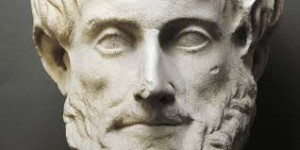To convince your customers you need to show expertise, use facts and capture their hearts. In other words, you need to use what the ancient Greeks called ethos, logos and pathos in your content marketing.
 Once upon a time there lived an old lady in a remote village in Africa. She was all alone, her only son had moved far away to find work. She knew he had married, and that she had grandkids, but she had never seen them or spoken with them. Neither her nor her son had the means to travel, and she had resigned herself to the fact that she would never be close to the only family she had.
Once upon a time there lived an old lady in a remote village in Africa. She was all alone, her only son had moved far away to find work. She knew he had married, and that she had grandkids, but she had never seen them or spoken with them. Neither her nor her son had the means to travel, and she had resigned herself to the fact that she would never be close to the only family she had.
But one day something wonderful happened. Her son managed to get her a mobile phone, and all of a sudden she could talk to him. More importantly, she could talk to her grandkids and for the very first time hear their voices. They still lived far, far away, and they could not talk very often, but she never felt alone again. The phone became a treasured possession, and she even nick-named it “Squirrel” because to her it sounded like one.
This is really a story about mobile networks, and how technology has the power to connect us. And if I was a vendor of networks I would probably put more emphasis on the hard facts of capacity, durability and so on. But for at least some of the customers I would be trying to persuade stories about old ladies that gets to talk to their grandkids are just as important as facts. This is why we use storytelling as a part of our marketing and communication efforts.
Doing that still comes hard to a lot of people, and especially companies. That’s why I want to tell you about an old trick that’s been around for more than 2000 years. It’s what the great speakers of ancient Greece and Rome used – the art of rhetoric. The point of rhetoric was to help speakers persuade their audience. It’s a whole arsenal of useful tips and tricks, but today we’re just going to focus on one of them: Ethos, logos and pathos – Aristotle’s “road to persuasion”.
To take your content to new heights you need to integrate ethos, logos and pathos in your blog posts, your presentations and in any other kind of content you create. It’s three ways to persuade your target audience, and you need to use all three of them, that’s the whole point.
Ethos is your credibility. You use it to persuade your audience that you know what you’re talking about. For content creation ethos means bringing out the expert. You need to have someone with a track record in the area you’re addressing as spokesperson. This will validate your claim to be considered a thought leader, it will prove you have authority to speak about your subject matter. I for one find it hard to trust content that doesn’t have an identified author. How will I know that whoever created this actually knows what he or she is talking about?
Logos are your facts and figures. It means appealing with logic and reason. When you create content logos can be the fact sheet, the data used to create an infographic, the research portion of a white paper etc. You need it because your customer needs it. Even though a lot of decisions are based on emotions the customer needs the cold, hard facts to wrap the decision in, because that’s expected.
Pathos is the emotional part of the persuasion. Storytelling is a big part of this, because it triggers emotions within us. Yet this is the hardest part for most companies, because we as professional are not trained to use emotional arguments. We feel more at home when just using ethos and logos – credibility and facts – to persuade our customers. But if we really want to create a connection we need to make it an emotional one, or else run the risk of losing the attention and interest of those we are trying to convince.
The next time you sit down to think about content and messaging, or you gather your colleagues for a workshop, try to make sure that whatever you create has all three of the ingredients. The expertise, the facts and the figures and an emotional connection. And then measure it. I’m convinced that you will see improved results on recognition and converting.
Just like I’m convinced that what you remember if you read this far is the little old lady living in Africa. And that makes me happy.
This post was originally posted on LinkedIn in January, 2015
0 kommentarer på Improve your content with this ancient trick